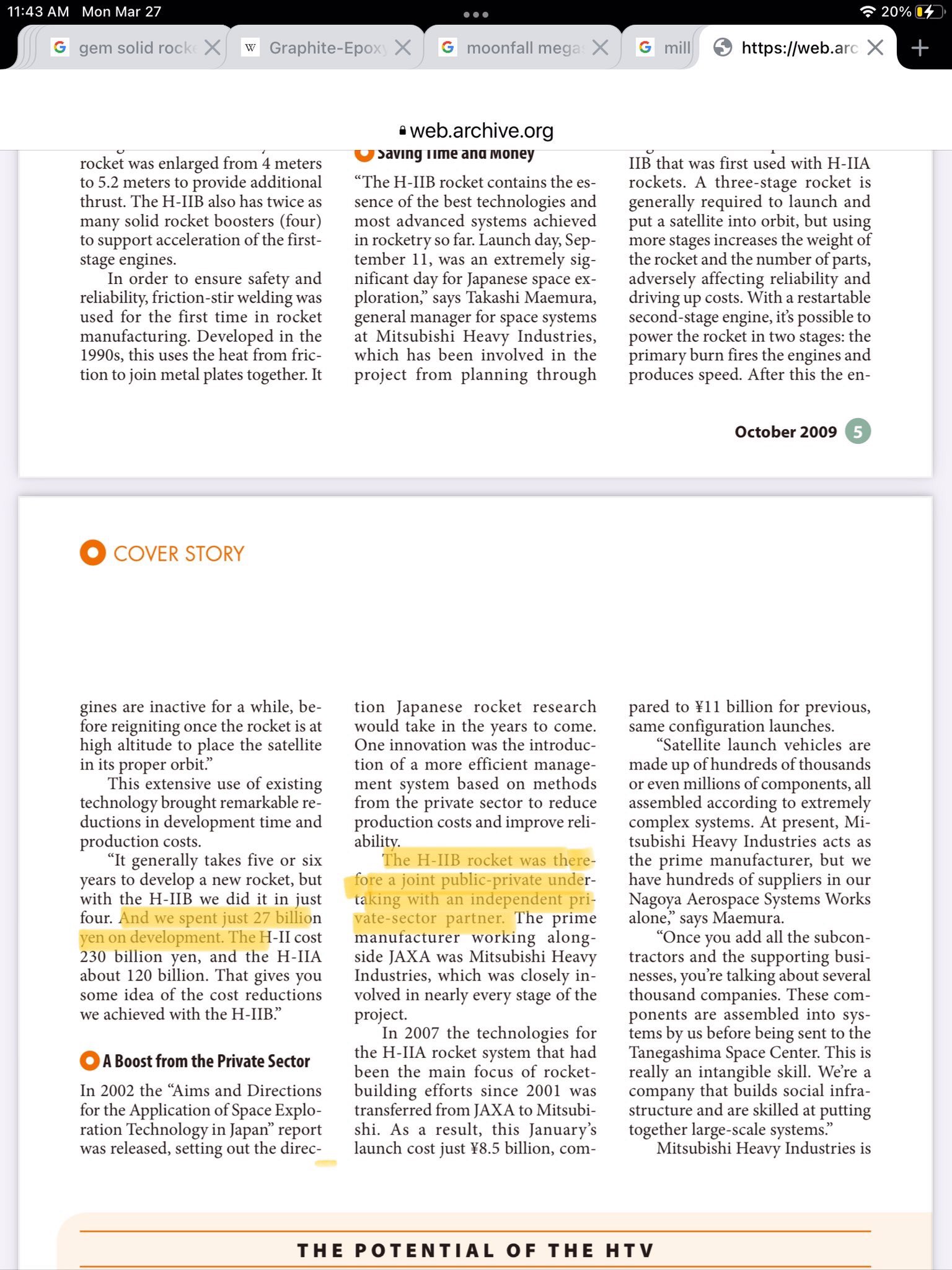Copyright 2013 Robert Clark
Europe Urged To Halt Work on ‘Dead End' Ariane 6 Design.
By Peter B. de Selding | May. 30, 2013
The
academy is urging the agencies to stop work on the Ariane 6 they
approved in November with a view to beginning full development in 2014.
The academy-favored rocket would use liquid propulsion instead of solid,
and would face four more years of preparatory work before moving to
full development in 2018.
In the meantime, the academy says, Europe
should focus on an upgraded heavy-lift Ariane 5 that would fly for a
decade before both it and the Europeanized version of Russia’s
medium-lift Soyuz rocket are replaced by the all-liquid Ariane 6 in
2027. This rocket, called Ariane 5 ME, has been in design for several
years. Continued work on it was approved, alongside Ariane 6, at the
November meeting of European Space Agency (ESA) governments.
http://www.spacenews.com/article/launch-report/35546europe-urged-to-halt-work-on-%E2%80%98dead-end-ariane-6-design
The Academy should also emphasize another key advantage of the liquid-fueled version of the Ariane 6 that it could be used for a manned launch vehicle.
Note
that Russia is raising their prices to $73 million per seat or $220
million for three. This is greater than the launch cost of the full 20
metric ton class Ariane 5. The smaller Ariane 6 would certainly be
cheaper than that. By producing this liquid fueled Ariane 6, Europe
could also get their own manned space flights and more cheaply than by paying
the Russians.
Both Russia and China have their own manned spaceflight programs, as will the U.S. in the near, short time frame. And even India and Japan are planning their own manned spaceflight programs. The Japan case is quite notable in that their plan is to use
twin cryogenic engines of similar characteristics to the Vulcain II.
The European Union has been the highest economic power or a close second to the U.S. in the world over the last few years. It should be regarded as unacceptable by European space advocates, private, governmental, and industry, that there has been no plan to give Europe a manned space program as with these other space agencies.
Such a manned-capable launcher could be done more quickly and cheaply
by using a commercial space approach. The Falcon 9 and the Antares only
took 4 years and a few hundred million dollars in development cost that had to
be paid by NASA.
I also estimate the cost per launch of a single
stage version could be done for half the $127 million cost given by the Academy in that
report for their version of the Ariane 6, vastly undercutting the Russians:
On the lasting importance of the SpaceX accomplishment, Page 3: towards European human spaceflight.
http://exoscientist.blogspot.com/2013/05/on-lasting-importance-of-spacex.html
Here's an argument for producing the Ariane 6 at a faster time frame than just 2027. The
Ariane 6 is supposed to be one-half to one-third as expensive as the Ariane
5. The Ariane 5 is already being used to deliver cargo to the ISS but
using the very expensive to develop and produce ATV. In fact ESA doesn't
want to produce any more ATV's after the last one to launch in 2014.
But if you have
this less expensive launcher in the Ariane 6 then you have a much less
expensive route to sending cargo to the ISS. But then you need a
pressurized capsule to transport it. Why spend the expense of developing
a new small pressurized capsule when you already have one in the
European developed Cygnus? (By the way this raises an interesting economic question I'll discuss at the end.)
SpaceX
is charging NASA $133 million to transport a maximum of 6,000 kg to the ISS.
Note this is well above the launch cost of the Falcon 9 alone. The large
extra cost is due to the use of the expensive Dragon capsule. The
Ariane 6 would have comparable payload capacity as the Falcon 9 but
using a 2,000 kg lighter capsule in the Cygnus. Then it could be at or above the cargo
capability of the Falcon 9 to the ISS. And from the estimated launch
cost of the Ariane 6 and the low cost of the Cygnus compared to the
Dragon their price could be at or below that of the Falcon 9/Dragon.
How's that for wanting to be competitive with SpaceX?
Now, the Academy wants ESA to make a liquid-fueled version of the
Ariane 6 instead of the planned solid-fueled one. Imagine you have that
and it is being used to send cargo via the Cygnus capsule to the ISS.
It's not much of leap at all that if you add life support and a heat
shield to the Cygnus then you would have a European vehicle capable of
sending astronauts to the ISS as well. And you could do it at a price to
undercut the Russians.
I want to argue again here for the
commercial space approach for accomplishing this. The 2027 time frame
for such a liquid fueled Ariane 6 is following the usual glacial pace of
government financed space programs. This would be near the end of the ISS (expected) extended life time. However, both SpaceX and Orbital Sciences by following the commercial space
approach were able to develop their
launchers in 4 years. Commercial space is both cheaper and faster than
government space.
To do the cost sharing of commercial space though the industry partners, or their investors, would have to be convinced it could be profitable. Note that SpaceX has gotten a $1.6 billion contract from NASA for delivering cargo to the ISS. The $127 million per launch cost estimated by the Academy is coming from the large, billion dollar, development costs under the usual governmental financing approach that would need to be recouped. Commercial space has proven though that both total development cost and the portion paid by the government are a fraction of those of the usual governmental financing. Then getting a similar billion dollar ISS supply contract as SpaceX and with a development cost that, literally, might only be a few hundred million dollars, would result in such a contract being
highly profitable.
About that economic question I mentioned
above, Orbital Sciences paid for the development of the Cygnus to the
Italian Space Agency(ISA). But certainly the ISA would not want to turn
over the full rights to the Cygnus to a foreign company. It's quite
likely ISA retains ownership of the Cygnus. This becomes interesting in
regards to the price they would charge for the Cygnus compared to the
price Orbital Sciences would charge.
Because Orbital paid for the
development of the Cygnus they would want to recoup that cost in the
price they charge. But the ISA does not have to recover that cost. This
means they could charge much less. But then why would anyone pay for the
higher cost from Orbital when they could get it cheaper from the ISA?
A puzzling question. It may be Orbital retains the rights to sell the Cygnus to NASA or even for all American launches.
Bob Clark





